The Smart Buildings Market is expected to grow from USD 80.5 billion in 2020 to USD 246.25 billion by 2028, at a CAGR of 15% during the forecast period 2021-2028.
A smart building is a concept that uses automated procedures to regulate different building functions, including air conditioning, heating, security, energy management, ventilation, and other systems. Smart gadgets and electronic components such as sensors, microchips, microcontrollers, and processors are installed in smart buildings to gather and process important data and manage it in order to regulate the activities of the building automatically. The backbone of the next generation of buildings is digitally connected, people-centric, and sustainable solutions. Businesses' need for smart buildings is concealed in their people-centric character. And it is how adaptable buildings are to changing resident demands, architects, and users should determine their value proposition.
The market for smart buildings is growing as the number of smart energy systems grows. The never-ending search for ways to improve accessibility, efficiency, sustainability, and comfort is likely to drive new developments in the smart building market. Technology companies that are constantly focused on extending the IoT backbone of smart buildings are driving the way for smart building advancements. The incorporation of internet of things solutions that combine diverse building systems is likely to gain traction in the smart building sector in the coming years. The risk of physical and digital retailers, on the other hand, is a major problem for all businesses. The smart building market is restrained by the complexity of interoperability between various linked building automation systems and the high investment cost necessary to construct a smart building.
This study delivers a comprehensive analysis of components, types, and regions. The component segment includes solutions and services. The solutions segment is further divided into energy management, building infrastructure management, security and emergency management, network management, IWMS. The service segment is further divided into consulting, implementation, support and maintenance. The energy management sub-segment from the solution segment held the largest market share. Energy management systems for smart buildings assist in reducing and monitoring the building's energy use. The type segment includes commercial, residential, industrial. The commercial segment held the largest market share, owing to the requirement for adequate and tailored solutions for improved energy efficiency.
The market has been divided into North America, Europe, Asia-Pacific, Middle East & Africa, and South America. North America held the largest market share in the year 2020. The region has observed the development of smart building solutions that utilize new technologies, like IoT, big data, cloud computing, data analytics, artificial intelligence, and deep learning, to save energy, minimize operating costs, improve occupant comfort, and comply with increasingly demanding global laws and environmental requirements, which have been attributed to the market's growth. Furthermore, due to the region's quick adoption of evolving technology, North America is a technologically developed country in the world. Furthermore, the United States and Canada are important contributors to the region's technical growth. The implementation of such smart solutions is also being pushed by governments in the region owing to the energy-saving benefits that such systems provide. The US Green Building Council, in cooperation with the Bank of America Charitable Foundation, operates the 'LEED' initiative, which assists local governments in implementing sustainable solutions.
Some of the notable players in the market are Advantech Co. Ltd (Taiwan), ABB Group (Switzerland), Control4 Corporation (US), Cisco Systems (US), Emerson Electric Co. (US), GEZE GmbH (Germany), Honeywell International, Inc. (US), Hitachi Ltd (Japan), HCL Technologies Limited (India), Huawei Technologies Co. Ltd, (China), IBM Corporation (US), Johnson Controls International PLC (Ireland), Legrand SA (France), Panasonic Corporation (Japan), Overkiz (France), Siemens AG (Germany), Schneider Electric SE (France), Sony Corporation (Japan), and United Technologies Corporation (US).
Smart Buildings Market Analysis and Forecast, Component
Smart Buildings Market Analysis and Forecast, Type
Smart Buildings Market Analysis and Forecast, Region
Report Description:
1. Introduction
1.1. Objectives of the Study
1.2. Market Definition
1.3. Research Scope
1.4. Currency
1.5. Key Target Audience
2. Research Methodology and Assumptions
3. Executive Summary
4. Premium Insights
4.1. Porter’s Five Forces Analysis
4.2. Value Chain Analysis
4.3. Top Investment Pockets
4.3.1. Market Attractiveness Analysis by Component
4.3.2. Market Attractiveness Analysis by Type
4.3.3. Market Attractiveness Analysis by Region
4.4. Industry Trends
5. Market Dynamics
5.1. Market Evaluation
5.2. Drivers
5.2.1. Global initiatives for the promotion of digital payments,
5.2.2. Increase in eCommerce sales
5.2.3. Rise in internet penetration increased need to manage regulatory and compliance policy
5.3. Restraints
5.3.1. High investment cost
6. Global Smart Buildings Market Analysis and Forecast, By Component
6.1. Segment Overview
6.2. Solutions
6.2.1. Energy Management
6.2.2. Building infrastructure Management
6.2.3. Security and Emergency Management
6.2.4. Network Management
6.2.5. IWMS
6.3. Services
6.3.1. Consulting
6.3.2. Implementation
6.3.3. Support and Maintenance
7. Global Smart Buildings Market Analysis and Forecast, By Type
7.1. Segment Overview
7.2. Commercial
7.3. Residential
7.4. Industrial
8. Global Smart Buildings Market Analysis and Forecast, By Regional Analysis
8.1. Segment Overview
8.2. North America
8.2.1. U.S.
8.2.2. Canada
8.2.3. Mexico
8.3. Europe
8.3.1. Germany
8.3.2. France
8.3.3. U.K.
8.3.4. Italy
8.3.5. Spain
8.4. Asia-Pacific
8.4.1. Japan
8.4.2. China
8.4.3. India
8.5. South America
8.5.1. Brazil
8.6. Middle East and Africa
8.6.1. UAE
8.6.2. South Africa
9. Global Smart Buildings Market-Competitive Landscape
9.1. Overview
9.2. Market Share of Key Players in Global Smart Buildings Market
9.2.1. Global Company Market Share
9.2.2. North America Company Market Share
9.2.3. Europe Company Market Share
9.2.4. APAC Company Market Share
9.3. Competitive Situations and Trends
9.3.1. Product Launches and Developments
9.3.2. Partnerships, Collaborations, and Agreements
9.3.3. Mergers & Acquisitions
9.3.4. Expansions
10. Company Profiles
10.1. Advantech Co. Ltd
10.1.1. Business Overview
10.1.2. Company Snapshot
10.1.3. Company Market Share Analysis
10.1.4. Company Product Portfolio
10.1.5. Recent Developments
10.1.6. SWOT Analysis
10.2. ABB Group
10.2.1. Business Overview
10.2.2. Company Snapshot
10.2.3. Company Market Share Analysis
10.2.4. Company Product Portfolio
10.2.5. Recent Developments
10.2.6. SWOT Analysis
10.3. Control4 Corporation
10.3.1. Business Overview
10.3.2. Company Snapshot
10.3.3. Company Market Share Analysis
10.3.4. Company Product Portfolio
10.3.5. Recent Developments
10.3.6. SWOT Analysis
10.4. Cisco Systems
10.4.1. Business Overview
10.4.2. Company Snapshot
10.4.3. Company Market Share Analysis
10.4.4. Company Product Portfolio
10.4.5. Recent Developments
10.4.6. SWOT Analysis
10.5. Emerson Electric Co.
10.5.1. Business Overview
10.5.2. Company Snapshot
10.5.3. Company Market Share Analysis
10.5.4. Company Product Portfolio
10.5.5. Recent Developments
10.5.6. SWOT Analysis
10.6. GEZE GmbH
10.6.1. Business Overview
10.6.2. Company Snapshot
10.6.3. Company Market Share Analysis
10.6.4. Company Product Portfolio
10.6.5. Recent Developments
10.6.6. SWOT Analysis
10.7. Honeywell International Inc.
10.7.1. Business Overview
10.7.2. Company Snapshot
10.7.3. Company Market Share Analysis
10.7.4. Company Product Portfolio
10.7.5. Recent Developments
10.7.6. SWOT Analysis
10.8. Hitachi Ltd
10.8.1. Business Overview
10.8.2. Company Snapshot
10.8.3. Company Market Share Analysis
10.8.4. Company Product Portfolio
10.8.5. Recent Developments
10.8.6. SWOT Analysis
10.9. HCL Technologies Limited
10.9.1. Business Overview
10.9.2. Company Snapshot
10.9.3. Company Market Share Analysis
10.9.4. Company Product Portfolio
10.9.5. Recent Developments
10.9.6. SWOT Analysis
10.10. Huawei Technologies Co. Ltd
10.10.1. Business Overview
10.10.2. Company Snapshot
10.10.3. Company Market Share Analysis
10.10.4. Company Product Portfolio
10.10.5. Recent Developments
10.10.6. SWOT Analysis
10.11. IBM Corporation
10.11.1. Business Overview
10.11.2. Company Snapshot
10.11.3. Company Market Share Analysis
10.11.4. Company Product Portfolio
10.11.5. Recent Developments
10.11.6. SWOT Analysis
10.12. Johnson Controls International PLC
10.12.1. Business Overview
10.12.2. Company Snapshot
10.12.3. Company Market Share Analysis
10.12.4. Company Product Portfolio
10.12.5. Recent Developments
10.12.6. SWOT Analysis
10.13. Legrand SA
10.13.1. Business Overview
10.13.2. Company Snapshot
10.13.3. Company Market Share Analysis
10.13.4. Company Product Portfolio
10.13.5. Recent Developments
10.13.6. SWOT Analysis
10.14. Panasonic Corporation
10.14.1. Business Overview
10.14.2. Company Snapshot
10.14.3. Company Market Share Analysis
10.14.4. Company Product Portfolio
10.14.5. Recent Developments
10.14.6. SWOT Analysis
10.15. Overkiz
10.15.1. Business Overview
10.15.2. Company Snapshot
10.15.3. Company Market Share Analysis
10.15.4. Company Product Portfolio
10.15.5. Recent Developments
10.15.6. SWOT Analysis
10.16. Siemens AG
10.16.1. Business Overview
10.16.2. Company Snapshot
10.16.3. Company Market Share Analysis
10.16.4. Company Product Portfolio
10.16.5. Recent Developments
10.16.6. SWOT Analysis
10.17. Schneider Electric SE
10.17.1. Business Overview
10.17.2. Company Snapshot
10.17.3. Company Market Share Analysis
10.17.4. Company Product Portfolio
10.17.5. Recent Developments
10.17.6. SWOT Analysis
10.18. Sony Corporation and United Technologies Corporation
10.18.1. Business Overview
10.18.2. Company Snapshot
10.18.3. Company Market Share Analysis
10.18.4. Company Product Portfolio
10.18.5. Recent Developments
10.18.6. SWOT Analysis
10.19. United Technologies Corporation
10.19.1. Business Overview
10.19.2. Company Snapshot
10.19.3. Company Market Share Analysis
10.19.4. Company Product Portfolio
10.19.5. Recent Developments
10.19.6. SWOT Analysis
List of Table
1. Global Smart Buildings Market, By Component, 2018-2028 (USD Billion)
2. Global Solutions, Smart Buildings Market, By Region, 2018-2028 (USD Billion)
3. Global Energy Management, Smart Buildings Market, By Region, 2018-2028 (USD Billion)
4. Global Building Infrastructure Management, Smart Buildings Market, By Region, 2018-2028 (USD Billion)
5. Global Security and Emergency Management, Smart Buildings Market, By Region, 2018-2028 (USD Billion)
6. Global Network Management, Smart Buildings Market, By Region, 2018-2028 (USD Billion)
7. Global IWMS, Smart Buildings Market, By Region, 2018-2028 (USD Billion)
8. Global Services, Smart Buildings Market, By Region, 2018-2028 (USD Billion)
9. Global Consulting, Smart Buildings Market, By Region, 2018-2028 (USD Billion)
10. Global Implementation, Smart Buildings Market, By Region, 2018-2028 (USD Billion)
11. Global Support and Maintenance, Smart Buildings Market, By Region, 2018-2028 (USD Billion)
12. Global Smart Buildings Market, By Type, 2018-2028 (USD Billion)
13. Global Commercial, Smart Buildings Market, By Region, 2018-2028 (USD Billion)
14. Global Residential, Smart Buildings Market, By Region, 2018-2028 (USD Billion)
15. Global Industrial, Smart Buildings Market, By Region, 2018-2028 (USD Billion)
16. North America Smart Buildings Market, By Component, 2018-2028 (USD Billion)
17. North America Smart Buildings Market, By Type, 2018-2028 (USD Billion)
18. U.S. Smart Buildings Market, By Component, 2018-2028 (USD Billion)
19. U.S. Smart Buildings Market, By Type, 2018-2028 (USD Billion)
20. Canada Smart Buildings Market, By Component, 2018-2028 (USD Billion)
21. Canada Smart Buildings Market, By Type, 2018-2028 (USD Billion)
22. Mexico Smart Buildings Market, By Component, 2018-2028 (USD Billion)
23. Mexico Smart Buildings Market, By Type, 2018-2028 (USD Billion)
24. Europe Smart Buildings Market, By Component, 2018-2028 (USD Billion)
25. Europe Smart Buildings Market, By Type, 2018-2028 (USD Billion)
26. Germany Smart Buildings Market, By Component, 2018-2028 (USD Billion)
27. Germany Smart Buildings Market, By Type, 2018-2028 (USD Billion)
28. France Smart Buildings Market, By Component, 2018-2028 (USD Billion)
29. France Smart Buildings Market, By Type, 2018-2028 (USD Billion)
30. U.K. Smart Buildings Market, By Component, 2018-2028 (USD Billion)
31. U.K. Smart Buildings Market, By Type, 2018-2028 (USD Billion)
32. Italy Smart Buildings Market, By Component, 2018-2028 (USD Billion)
33. Italy Smart Buildings Market, By Type, 2018-2028 (USD Billion)
34. Spain Smart Buildings Market, By Component, 2018-2028 (USD Billion)
35. Spain Smart Buildings Market, By Type, 2018-2028 (USD Billion)
36. Asia Pacific Smart Buildings Market, By Component, 2018-2028 (USD Billion)
37. Asia Pacific Smart Buildings Market, By Type, 2018-2028 (USD Billion)
38. Japan Smart Buildings Market, By Component, 2018-2028 (USD Billion)
39. Japan Smart Buildings Market, By Type, 2018-2028 (USD Billion)
40. China Smart Buildings Market, By Component, 2018-2028 (USD Billion)
41. China Smart Buildings Market, By Type, 2018-2028 (USD Billion)
42. India Smart Buildings Market, By Component, 2018-2028 (USD Billion)
43. India Smart Buildings Market, By Type, 2018-2028 (USD Billion)
44. South America Smart Buildings Market, By Component, 2018-2028 (USD Billion)
45. South America Smart Buildings Market, By Type, 2018-2028 (USD Billion)
46. Brazil Smart Buildings Market, By Component, 2018-2028 (USD Billion)
47. Brazil Smart Buildings Market, By Type, 2018-2028 (USD Billion)
48. Middle East and Africa Smart Buildings Market, By Component, 2018-2028 (USD Billion)
49. Middle East and Africa Smart Buildings Market, By Type, 2018-2028 (USD Billion)
50. UAE Smart Buildings Market, By Component, 2018-2028 (USD Billion)
51. UAE Smart Buildings Market, By Type, 2018-2028 (USD Billion)
52. South Africa Smart Buildings Market, By Component, 2018-2028 (USD Billion)
53. South Africa Smart Buildings Market, By Type, 2018-2028 (USD Billion)
List of Figures
1. Global Smart Buildings Market Segmentation
2. Global Smart Buildings Market: Research Methodology
3. Market Type Estimation Methodology: Bottom-Up Approach
4. Market Type Estimation Methodology: Top-Down Approach
5. Data Triangulation
6. Porter’s Five Forces Analysis
7. Value Chain Analysis
8. Global Smart Buildings Market Attractiveness Analysis By Component
9. Global Smart Buildings Market Attractiveness Analysis By Type
10. Global Smart Buildings Market Attractiveness Analysis By Region
11. Global Smart Buildings Market: Dynamics
12. Global Smart Buildings Market Share by Component (2021 & 2028)
13. Global Smart Buildings Market Share by Type (2021 & 2028)
14. Global Smart Buildings Market Share by Regions (2021 & 2028)
15. Global Smart Buildings Market Share by Company (2020)
Market research is a method of gathering, assessing and deducing data & information about a particular market. Market research is very crucial in these days. The techniques analyze about how a product/service can be offered to the market to its end-customers, observe the impact of that product/service based on the past customer experiences, and cater their needs and demands. Owing to the successful business ventures, accurate, relevant and thorough information is the base for all the organizations because market research report/study offers specific market related data & information about the industry growth prospects, perspective of the existing customers, and the overall market scenario prevailed in past, ongoing present and developing future. It allows the stakeholders and investors to determine the probability of a business before committing substantial resources to the venture. Market research helps in solving the marketing issues challenges that a business will most likely face.
Market research is valuable because of the following reasons:
Our research report features both the aspects; qualitative and quantitative. Qualitative part provides insights about the market driving forces, potential opportunities, customer’s demands and requirement which in turn help the companies to come up with new strategies in order to survive in the long run competition. The quantitative segment offers the most credible information related to the industry. Based on the data gathering, we use to derive the market size and estimate their future growth prospects on the basis of global, region and country.
Our market research process involves with the four specific stages.

Data Collection: This stage of the market research process involves with the gathering and collecting of the market/industry related data from the sources. There are basically two types of research methods:
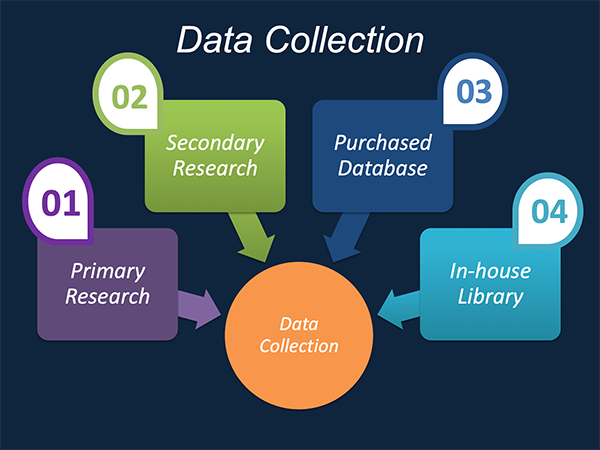
Data Synthesis: This stage includes the evaluation and assessment of all the data acquired from the primary and secondary research. It likewise includes in evaluating the information for any disparity watched while information gathering identified with the market. The data & information is gathered with consideration to the heterogeneity of sources. Scientific and statistical methods are implemented for synthesizing dissimilar information sets and provide the relevant data which is fundamental for formulating strategies. Our organization has broad involvement with information amalgamation where the information goes through different stages:


Market Formulation & Deduction: The last stage includes assigning the data & information in a suitable way in order to derive market size. Analyst reviews and domain based opinions based on holistic approach of market estimation combined with industry investigation additionally features a crucial role in this stage.
This stage includes with the finalization of the market size and numbers that we have gathered from primary and secondary research. With the data & information addition, we ensure that there is no gap in the market information. Market trend analysis is finished by our analysts by utilizing data extrapolation procedures, which give the most ideal figures to the market.
Data Validation: Validation is the most crucial step in the process. Validation & re-validation through scientifically designed technique and process that helps us finalize data-points to be used for final calculations. This stage also involves with the data triangulation process. Data triangulation generally implicates the cross validation and matching the data which has been collected from primary and secondary research methods.





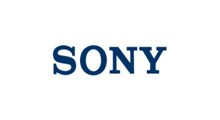

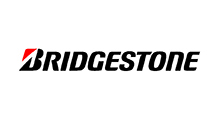

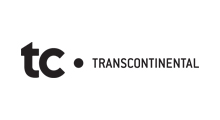















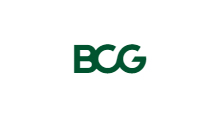


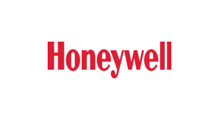

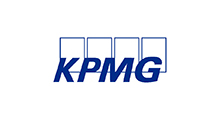
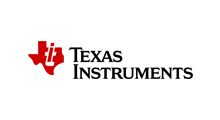



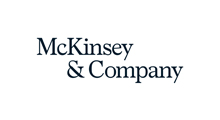

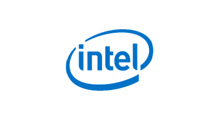







Free Customization
Countries can be added on demand
Free yearly update on purchase of Multi/Corporate User License
Companies served till date

We serve our customers 24x7 for 365 days through calls, emails and live chat options.

Huge database of exceptional market reports bringing market intelligence to your fingertips.

SSL enabled, we offer you various secured payment options for risk free purchase.